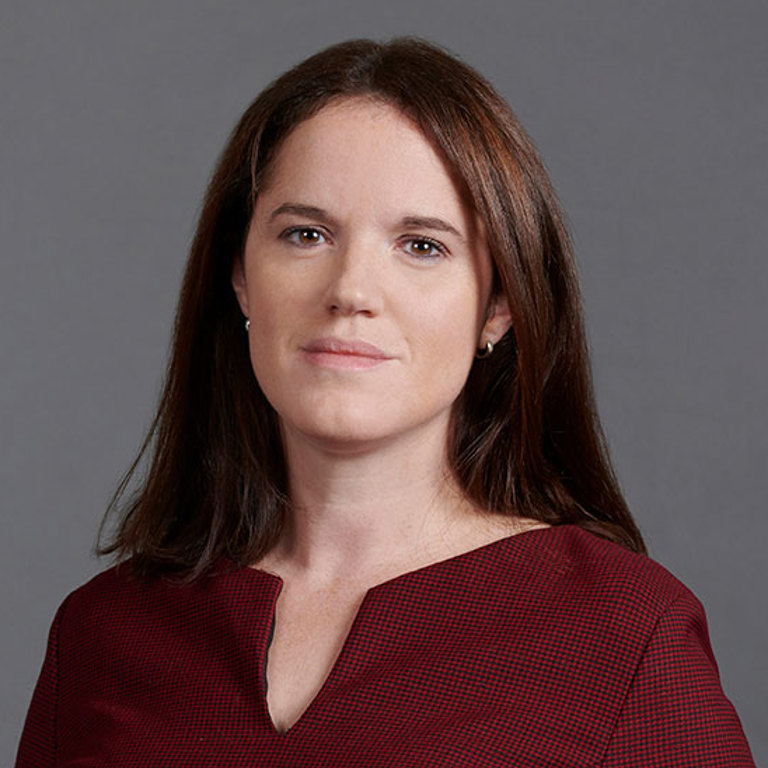COP28: Discussion points for business from week 1
COP28 Discussion Points For Business From Week 1This year’s 28th Conference of the Parties to discuss international action on climate change (COP28) has seen energy, nature, carbon markets, finance and fairness developing as central themes.
And whilst there is pressure for governments to do more, the private sector could be a key actor in mobilising clean finance, producing robust transition plans, and developing voluntary carbon markets.
As the first week draws to a close, we draw together the themes and developments that are most likely to have the greatest impact for businesses.
Sustainable energy will be key to climate action
The decision to host COP28 in the UAE caused a certain amount of controversy for climate activists, but in some respects the location is highly relevant to this year’s debate. The central and familiar message emerging so far is that a transition to sustainable energy is the key to effective climate action - and countries who produce and rely on fossil fuels such as the UAE will need to be included in the forefront of this transition.
Since the start of COP28, over 120 countries (including the USA, India and the UK) have pledged to treble global installed renewable energy generation capacity to at least 11,000 GW by 2030.
Commentators have welcomed the 2030 target but have stressed that governments will need to take swift action, pointing to planning regimes and supply chain bottlenecks as particular barriers. A report published ahead of the conference by the COP28 Presidency, the Global Renewables Alliance and the International Renewable Energy Agency, has flagged that annual average investment in renewable power generation will need to reach $1,300 billion in the 2023-2030 period, compared to $486 billion in 2022.
Clean hydrogen
On 3 December, the International Finance Corporation convened a side-event on scaling global clean hydrogen financing, which stressed both the utility of low carbon hydrogen in decarbonising the hard to abate sectors, and also the significant challenges faced by companies involved in this area. Enabling financing is critical for clean hydrogen. However stakeholders also stressed the importance of supporting the development of offtake markets and enabling infrastructure (such as ports and grid connections).
Nuclear
Beyond renewables, also on 3 December, more than 20 countries (including France, a prominent proponent of nuclear power, the USA and the UK) signed a declaration with the aspiration to triple nuclear energy capacity by 2050. The declaration invites international financial institutions to include nuclear power in their lending policies and to support the sector.
Fossil fuels find a way forwards
Despite ongoing, and sometimes heated, discussions regarding the role of oil and gas production in the Global Stock Take, progress is evident in the pledges from the fossil fuel industry to decarbonise and cut emissions from their own operations.
The Oil and Gas Decarbonization Charter
At least 50 oil and gas companies joined a new “landmark” Oil and Gas Decarbonization Charter (OGDC) to accelerate “high-scale impact” climate action within the industry. The charter asks its members to commit to a number of key actions. These include (i) achieving net zero scope 1 and scope 2 emissions by 2050; and (ii) ending routine flaring of natural gas, as well as reaching near-zero upstream methane emissions, by 2030. Other goals include investment in renewables, low-carbon fuels and negative emissions technologies, as well as increased transparency around the reporting and independent verification of greenhouse gas emissions. Some of the world’s biggest oil and gas producers have signed up, including national oil companies like ADNOC, Equinor and Saudi Aramco, and independents such as BP, ExxonMobil, Shell, and TotalEnergies.
Tackling methane
The OGDC is significant in so far as methane is one of the most potent greenhouse gases - John Kerry, the US Special Presidential Envoy for Climate, has said that tackling methane is “the easiest, quickest, fastest, cheapest way to begin to get gains against [global] warming”. Although OGDC targets are not binding and do not reference scope 3 (upstream and downstream) emissions, it is reported that signatories will be required to submit a plan to meet them by 2025. In parallel Bloomberg Philanthropies, together with the International Energy Agency amongst others, launched a methane surveillance programme to track progress and ensure “public commitments to tackling methane are followed through on”.
The charter is not without its critics. UN Secretary-General Antonio Guterres has welcomed its efforts to tackle methane emissions, describing it as a “step in the right direction”, but has highlighted that it does not address the issue of eliminating emissions from fossil fuel consumption.
Coal
Separately, the USA, UAE, Norway and Iceland are among 10 new signatories to the Powering Past Coal Alliance (launched on 2017) which requires members to stop developing new unabated coal power plants and phase out existing unabated coal plants – a significant commitment as coal power is the world’s single biggest contributor to climate change. However, whilst Alliance members now include most OECD and EU nations, China and India have not joined. Heavily dependent on coal for power, in a communique issued before the conference, India’s Prime Minister Modi’s office stated that developing economies “must have access to equitable carbon and development space to achieve sustainable development”.
Branching out into nature-positive finance and solutions
Tackling nature-related issues, as the intrinsically linked other side of the coin to carbon when addressing climate change, is expected to be a developing theme during and after COP.
On the opening day, COP28 President Dr Sultan Al Jaber emphasised the need to put nature, people, lives and livelihoods at the heart of the climate action agenda. A day later, King Charles told delegates that "harmony with nature must be maintained" and that if we do not "rapidly repair and restore nature's economy… our own economy and survivability will be imperilled".
The Glasgow Financial Alliance for Net Zero (GFANZ), established at COP26, has also contributed to the discussion, having identified integrating nature into businesses' transition plans as a priority for 2024. In the coming week, Brazil is expected to announce a global financing framework for conservation of tropical rainforests, and the World Bank will host a session on "Defining Pathways for Nature Finance".
Financing green
Finance remains vital to addressing nature-related issues effectively. A joint declaration by 8 multilateral and development finance institutions is set to create a Task Force on Sustainability-Linked Sovereign Financing for Nature and Climate, aimed at improving the availability and affordability of climate-linked financial instruments for sovereign issuers. Although not expressly mentioned in the declaration some, such as the African Development Banks’s Hassatou Diop N’Sele, have said they hope the task force will bring “debt-for-nature swaps and related instruments to the forefront”.
These initiatives come on the heels of the UNEP Finance Initiative's launch of its Principles for Responsible Banking (PRB) Nature Target Setting Guidance, published in late November. The guidance is aimed at helping provide a systemic approach for the 500+ banks and insurers who've signed up to the PRB, to set and achieve nature targets in a way that is consistent with emerging nature frameworks. This includes the final Taskforce on Nature-related Financial Disclosures Recommendations. In particular, it aims to help the banking industry align with the Global Biodiversity Framework agreed at the biodiversity COP15, address and reverse nature and biodiversity loss by 2030, redirect financial flows to bridge the $700 billion biodiversity finance gap, and achieve harmony with nature by 2050.
Robust voluntary carbon markets are needed
Recognising the role that markets for carbon credits for voluntary use can play in climate action, the COP28 Presidency hosted a Roundtable on Progress Towards High-Integrity Voluntary Carbon Markets (VCMs) on 4 December. Whilst delegates emphasised that VCMs should not be a substitute for government action or emission reductions, they recognised that there is a role for robust VCMs.
Nature-based carbon credits
At the Roundtable, the World Bank Group President, Ajay Banga, announced the launch in 2024 of the first World Bank forestry-related credits initiative. A total of 126 million credits will be potentially available, enabling developing countries with natural resources to be paid for protecting these assets for the benefit of all. Acknowledging the need for quality assurance, the World Bank is undertaking environmental and social integrity assurance as well as working on other enabling measures such as clarifying the legal nature of carbon credits and setting up the necessary infrastructure to enable accessible, transparent markets. The bank intends to scale this initiative to other sectors such as organic carbon and soil, with the energy transition providing another source of finance for these schemes in the future.
Developing integrity in the voluntary carbon market
Meanwhile, the UK representative, Baroness Charlotte Vere, highlighted the UK government’s forthcoming consultation on high integrity carbon and nature markets, including its intention to consult on developing guidelines for how carbon credits should be used in corporate claims in the UK and on whether a labelling scheme for UK generated credits could unlock further finance for net zero in the UK.
Separately, VCM standard setters announced their collaboration on an “end-to-end integrity framework” which would provide a guide to companies using carbon credits. The initiative will bring together four leading organisations: the Voluntary Carbon Markets Integrity Initiative, the Integrity Council for the Voluntary Carbon Market, the Greenhouse Gas Protocol and the Science Based Targets initiative.
These developments come at a time of increasing regulatory scrutiny of offsetting schemes, following examples of low-quality products in the market. In this context, on 3 December the International Organization of Securities Commissions (IOSCO) published a consultation report on VCMs, discussing proposed good practices in primary and secondary markets aimed at addressing vulnerabilities.
The positive momentum for VCMs, and forthcoming proposals at COP28 should bring greater certainty for corporates that have, or are looking to have, voluntary carbon initiatives as part of their decarbonisation strategies.
Climate finance commitments increase
Discussions so far at COP28 have underscored the substantial financial needs for the transition to a net zero economy, climate adaptation, and disaster relief. The second report released by the UN-convened Independent High-Level Expert Group on Climate Finance (IHLEG) estimated that emerging markets and developing countries will need annual investment of $2.4 trillion until 2030 to confront challenges posed by climate change.
Funding announcements
Significant funding announcements have been made over the last few days, including governmental pledges to the UN multilateral Loss and Damage Fund, Adaptation Fund, and Green Climate Fund.
Despite Green Climate Fund replenishment pledges reaching $12.8 billion (surpassing previous years), the total amounts pledged to date fall significantly short of the funding required. The IHLEG proposes a fivefold increase in concessional finance, a threefold increase in multilateral development bank finance, and a fifteenfold increase in private climate finance to emerging markets and developing economies by 2030.
Importance of private capital
Acknowledging that public finance alone is insufficient, there is broad agreement on the importance of mobilising the private sector. Notable developments include the new Abu Dhabi partnership with asset managers to establish a climate think tank, the creation of the ALTÉRRA fund by the UAE in collaboration with BlackRock and others, and the UAE banking sector pledge to mobilise $270 billion in sustainable finance by 2030. The extensive participation of private sector players at COP28 is hopefully a sign of increasing private investment in climate finance.
The role for development capital
Development banks have also announced commitments to scale up funding and make climate finance more accessible and affordable. Examples include the African Development Bank's proposal to leverage IMF Special Drawing Rights for climate and development, development banks’ commitments to expand the use of climate-resilient debt clauses, and the creation of a multi-bank Task Force on Sustainability-Linked Sovereign Financing for Nature and Climate (discussed above). The World Bank has also committed to allocating 45% of its annual financing to climate-related projects next fiscal year.
Bringing this altogether, COP28 President Dr Al Jaber launched the UAE Leaders' Declaration on a Global Climate Finance Framework which he described as a “framework for financing a new climate economy”. The Declaration, launched alongside leaders from 12 other countries including the UK and USA, aims to ensure that climate finance is available, accessible and affordable, and is focused “first on rebuilding trust, second on reframing climate investments as economic opportunities and third on scaling up climate finance”.
Loss and damage talks reach crucial agreement
‘Loss and Damage’ refers to climate change impacts which cannot be, or have not been, avoided by measures to reduce greenhouse gas emissions or promote adaptation. It covers destruction caused, for example, by melting glaciers or climate change-linked extreme weather. It spans economic and non-economic loss and damage, from loss of livelihood and property to loss of life.
On the first day of COP28, governments officially launched the new Loss and Damage Fund, which was agreed at COP27, and has been described as a “historic” step following years of deadlock. It has been agreed that the fund should provide a pot of “at least” $100 billion per year by 2030, provisionally to be administered by the World Bank for four years. All developing countries will be eligible to access resources from the Fund, with a minimum percentage allocation to the least developed countries and small island developing states.
So far, governments have pledged to pay a combined total of just over $700m to the Loss and Damage Fund. The largest contributions reportedly came from Italy ($108m), France ($108m), the UAE ($100m) and Germany ($100m). However, the current total pledged is dwarfed by the estimates for the annual cost of Loss and Damage suffered by climate-vulnerable countries, which currently range from $100bn-$580bn. Contributions are reported to be voluntary, with developed countries not obliged to contribute.















